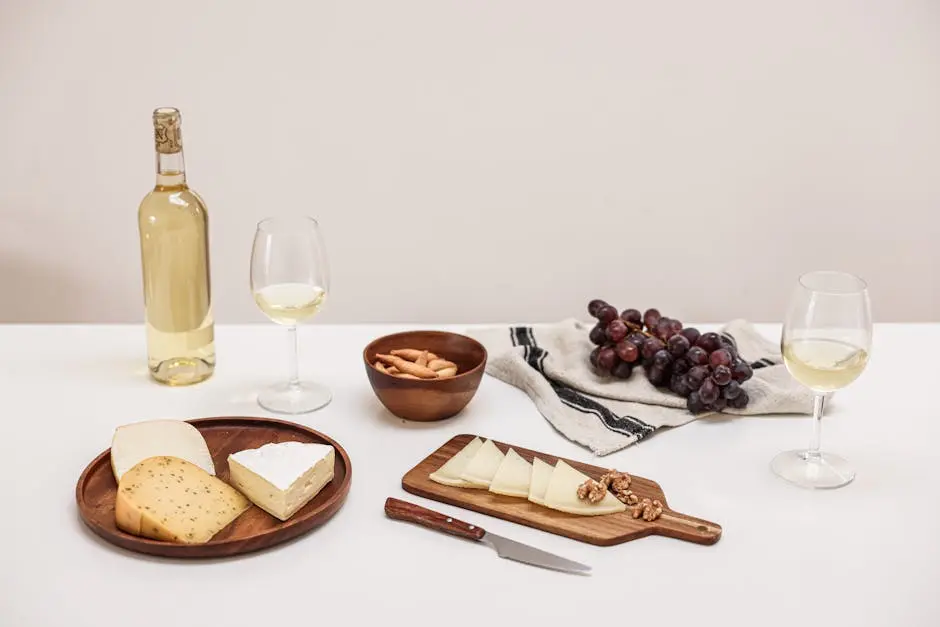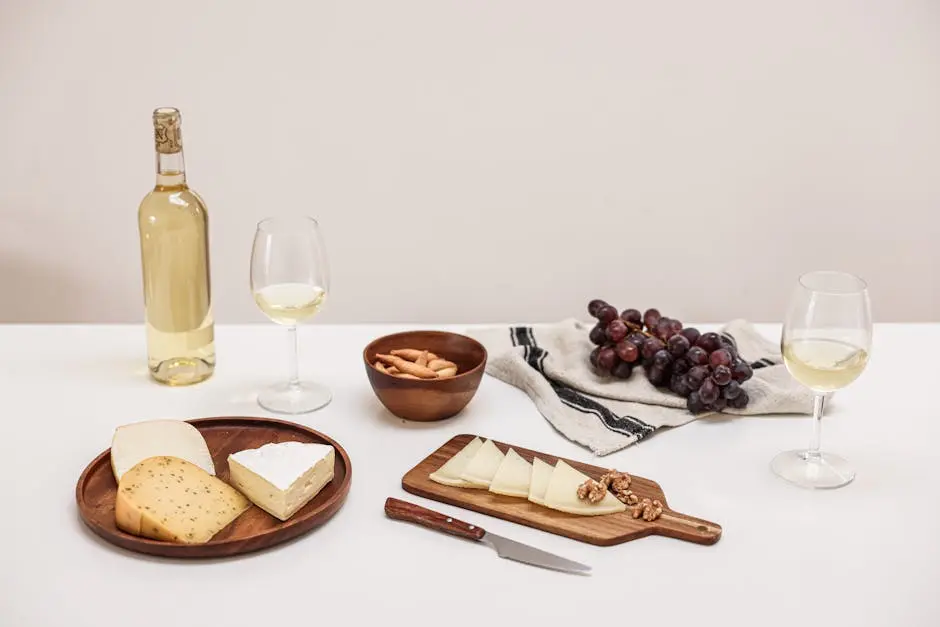Welcome to the world of wine pairing, where every glass tells a story and every sip is a celebration. Whether you’re a seasoned wine enthusiast or a curious beginner, mastering the art of pairing wines can enhance your tasting experience, especially when hosting a Lecavalier event. Let’s explore some tips to make your next wine tasting a memorable one.
1. Understanding the Basics of Wine Pairing
Wine pairing is an art that combines the flavors of food and wine to enhance the overall dining experience. By understanding the basics, you can create harmonious pairings that bring out the best in both elements. Start by considering the primary flavor profiles of the wine: sweetness, acidity, bitterness, and alcohol content. Each component interacts differently with food flavors, so consider wines with sharp acidity to cut through rich, fatty dishes. Similarly, sweetness in wines can balance out spicier foods, creating a harmonious taste experience. As a foundational tip, aim to match the intensity of the food and the wine; a bold wine should pair well with a richly flavored dish to prevent one from overpowering the other.
Another essential rule is to think of wine pairing as a way to enhance and not mask the flavors. For example, lighter wines such as a vibrant Pinot Grigio can complement delicate dishes like ceviche, allowing the freshness of each element to shine. Conversely, a full-bodied red like a Cabernet can stand up to the robust flavors of barbecued ribs. Experimenting with these basic principles during your wine tasting can turn an ordinary meal into an extraordinary experience.
2. Balancing Acidity with Food
Acidic wines are like a squeeze of lemon on your dish—they brighten the flavors and refresh your palate. A zesty Sauvignon Blanc or a crisp Pinot Grigio can transform a rich, creamy pasta dish or soft cheeses by cutting through the heaviness and enhancing the dish’s complexity. Balance is key: while the acidity in wine can refresh the palate and create an intriguing contrast, pairing it with dishes of equal acidity ensures one doesn’t overpower the other. This harmonious balance often makes meals more memorable.
When it comes to food with higher acidity levels, like a tomato-based sauce, you might find that wines with equivalent tangy notes or even a touch sweeter bring out the best flavors in the dish. Look into wines like Beaujolais or Merlot that complement tomato sauces’ acidity without the dominance of bitterness or tannin. Notably, the interaction between acidic foods and wines helps uncover hidden flavors, opening your palate to a wider array of tasting experiences.
3. Matching Sweetness Levels
One of the biggest faux pas in wine tasting is pairing a wine with less sweetness than the dessert it accompanies—this can make the wine seem bitter and unpalatable. Ensuring that the wine is sweeter than the dessert prevents ruining the dessert’s delight and the wine’s bouquet. Consider sweet Moscato with a fruit tart or even a Riesling with nutty pastries to indulge your sweet tooth while discovering the full potential of desert wine pairings. This attention to sweetness levels can drastically improve your dining delight during a Lecavalier tasting.
When exploring varying sweetness levels in wines, experimenting with contrast can also bring surprises. A classic example is pairing a bold, fruity red wine with a spicy dessert, like a dark chocolate chili tart. While this might seem counterintuitive, the heat from the chili can accentuate the berry notes, resulting in an exciting pairing. These unexpected combinations showcase how complexity and innovation in wine pairings can add depth to your tasting sessions.
4. Considering the Intensity of Flavors
Understanding the intensity of flavor is crucial for matching wines with complementary foods. A powerful wine, such as a robust Cabernet Sauvignon, demands an equivalent counterpart in the meal, like grilled steak. This ensures a seamless marriage of flavors where neither the wine nor the meal steals the spotlight. Seek dishes with rich flavors or hearty ingredients to harmonize with such intense wines, enhancing the overall tasting experience. For a lighter, more elegant wine, consider dishes with subtler flavors, allowing the wine’s characteristics to truly shine through.
Conversely, softer wines with less pronounced flavors allow more culinary creativity. Wines like Pinot Noir offer such versatility that they pair well with diverse dishes, from roasted chicken to savory vegetarian fare. This adaptability underscores the freedom one has when curating a wine tasting menu, highlighting that understanding the intensity of both your meal and wine transforms a standard event into a journey for the senses. Consider incorporating mixed varietals into your tasting selections for an enriched, exploratory experience.
5. Taming Tannins with Protein
Tannins in wines such as Malbec or a strong Bordeaux can create a drying sensation in the mouth, which might be overwhelming unless expertly paired. Proteins like steaks or chargrilled meats have the unique ability to soften these tannins. The tannins bind with the protein, smoothing the wine’s flavors while highlighting subtler notes that may not initially stand out. This interplay can unlock a fuller appreciation of complex tannic wines, especially during a Lecavalier tasting. Incorporating such pairings on your wine tasting menu will enhance guests’ enjoyment and showcase the depth of flavors in each glass.
Beyond meat, other protein sources such as aged cheeses also offer effective counterpoints to tannins. The depth and savoriness of a cheese platter can highlight the nuanced notes of a structured wine in fascinating ways. Exploring different cheese varieties during a tasting adds dimension and offers guests a sensory journey through different taste and textural experiences. Remember that pairing is a personal experience, so be open to experimenting with non-traditional proteins, like mushrooms or legumes, that can similarly temper tannins.
6. Experimenting with Regional Pairings
Regional pairings are a fascinating way to delve into the heart of a wine’s origins and its unique culinary culture. Such pairings often result in enriching and resonant combinations that reflect shared terroir and traditional preparation methods. For instance, consider pairing a rustic Italian Chianti with a locally-inspired tomato-based pasta. The flavors harmonize due to their shared cultural backdrop and ingredient philosophy. By broadening one’s exploration into wine’s heritage, you can uncover stories that enrich each sip and bite taken together.
Even more adventurous regional pairings might include sampling traditional Spanish Rioja with tapas, highlighting the full-bodied red’s complementary notes with the varied spices and textures found in tapas dishes. A successful regional pairing at a Lecavalier tasting marries familiar and novel elements that transport guests to far-off places. These pairings can become a focal storytelling aspect of your event, educating and enlivening attendees. Encouraging guests to consider the origins of their pairings leads to a more profound appreciation of the interplay between wine and food.
As you become more comfortable, consider regional pairings that cross traditional boundaries for an innovative twist on a classic concept. Integrating a South American Malbec into French-inspired cuisine, for example, may yield delightful contrasts, with each aspect bringing out new facets in the other. These experimental pairings can become a standout experience, highlighting your creativity and deepened understanding of wine origins.
7. Playing with Texture Combinations
Texture is often overlooked in wine pairings, yet it plays a significant role in the overall sensory experience. A wine like buttery Chardonnay, with its smooth, round texture, can seamlessly match the lush mouthfeel of buttered lobster, while also enhancing the savory notes of the dish. Considering how the wine feels in the mouth as well as its flavor can elevate pairings to new heights, making each sip and bite a delight.
Beyond obvious textural matches, contrast in texture between wine and food can provide an exciting element. Crisp sparkling wines or effervescent Proseccos introduce a lively, tingling sensation when paired with creamy risottos or rich béchamel sauces. This playful interaction adds depth and interest, making each course at a Lecavalier tasting event more intriguing. Contemplating the texture adds another dimension to your pairing efforts, and encourages a holistic appreciation of the food and wine dynamics.



